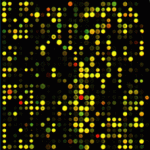Genomics
|
24 april 2012 19:38:29 |
| Characterization of the transcriptome of an ecologically important avian species, the Vinous-throated Parrotbill Paradoxornis webbianus bulomachus (Paradoxornithidae; Aves) (BMC Genomics) |
|
Tweet Background:
Adaptive divergence driven by environmental heterogeneity has long been a fascinating topic in ecology and evolutionary biology. The study of the genetic basis of adaptive divergence has, however, been greatly hampered by a lack of genomic information. The recent development of transcriptome sequencing provides an unprecedented opportunity to generate large amounts of genomic data for detailed investigations of the genetics of adaptive divergence in non-model organisms. Herein, we used the Illumina sequencing platform to sequence the transcriptome of brain and liver tissues from a single individual of the Vinous-throated Parrotbill, Paradoxornis webbianus bulomachus, an ecologically important avian species in Taiwan with a wide elevational range of sea level to 3100 m.
Results:
Our 10.1 Gbp of sequences were first assembled based on Zebra Finch (Taeniopygia guttata) and chicken (Gallus gallus) RNA references. The remaining reads were then de novo assembled. After filtering out contigs with low coverage (< 10X), we retained 67,791 of 487,336 contigs, which covered approximately 5.3% of the P. w. bulomachus genome. Of 7,779 contigs retained for a top-hit species distribution analysis, the majority (about 86%) were matched to known Zebra Finch and chicken transcripts. We also annotated 6,365 contigs to gene ontology (GO) terms: in total, 122 GO-slim terms were assigned, including biological process (41%), molecular function (32%), and cellular component (27%). Many potential genetic markers for future adaptive genomic studies were also identified: 8,589 single nucleotide polymorphisms, 1,344 simple sequence repeats and 109 candidate genes that might be involved in elevational or climate adaptation.
Conclusions:
Our study shows that transcriptome data can serve as a rich genetic resource, even for a single run of short-read sequencing from a single individual of a non-model species. This is the first study providing transcriptomic information for species in the avian superfamily Sylvioidea, which comprises more than 1,000 species. Our data can be used to study adaptive divergence in heterogeneous environments and investigate other important ecological and evolutionary questions in parrotbills from different populations and even in other species in the Sylvioidea. |
| 125 viewsCategory: Genomics |
 A framework genetic map for Miscanthus sinensis from RNAseq-based markers shows recent tetraploidy (BMC Genomics) A framework genetic map for Miscanthus sinensis from RNAseq-based markers shows recent tetraploidy (BMC Genomics)Functional organization and its implication in evolution of the human protein-protein interaction network (BMC Genomics) 
|
| blog comments powered by Disqus |
MyJournals.org
The latest issues of all your favorite science journals on one page
The latest issues of all your favorite science journals on one page



